Art and history come together in seaweed exhibit co-curated by Northeastern researcher
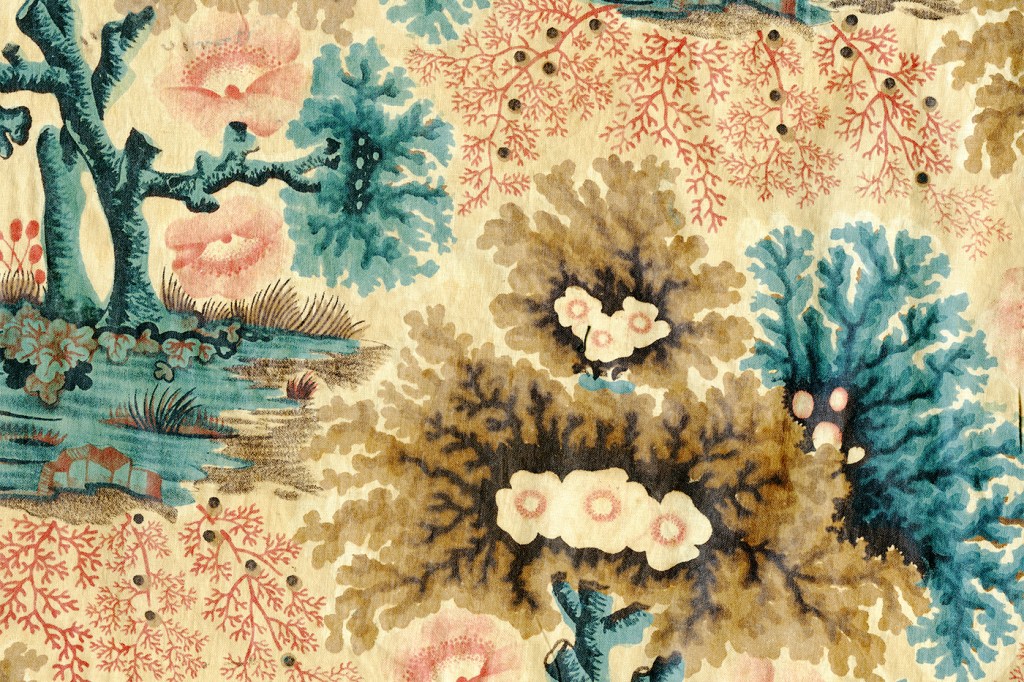
When you think of paintings by John Singer Sargent and Andrew Wyeth, or decorative objects by Limoges and Tiffany, seaweed may not be the first thing that springs to mind.
But these artworks are all part of a seaweed exhibit at the New Bedford Whaling Museum that opens the viewer’s eyes to the undulating beauty of the marine plants that continues to inspire artists to this day.
Co-curated by Northeastern professor Maura Coughlin, the exhibit titled “A Singularly Marine & Fabulous Produce: the Cultures of Seaweed” runs until Dec. 3 and features 125 works including paintings, ceramics, scrapbooks, photography, prints, textiles and metal art from the late 18th through the 21st centuries.
“Seaweed continues to inspire people in the arts because it’s so lovely but it also has a really appealing material quality,” Coughlin says.
For many coastal people, seaweed was an object of everyday use that naturally lent itself to design purposes, she says, adding that there has been a resurgence of interest in seaweed by scientists and farmers.
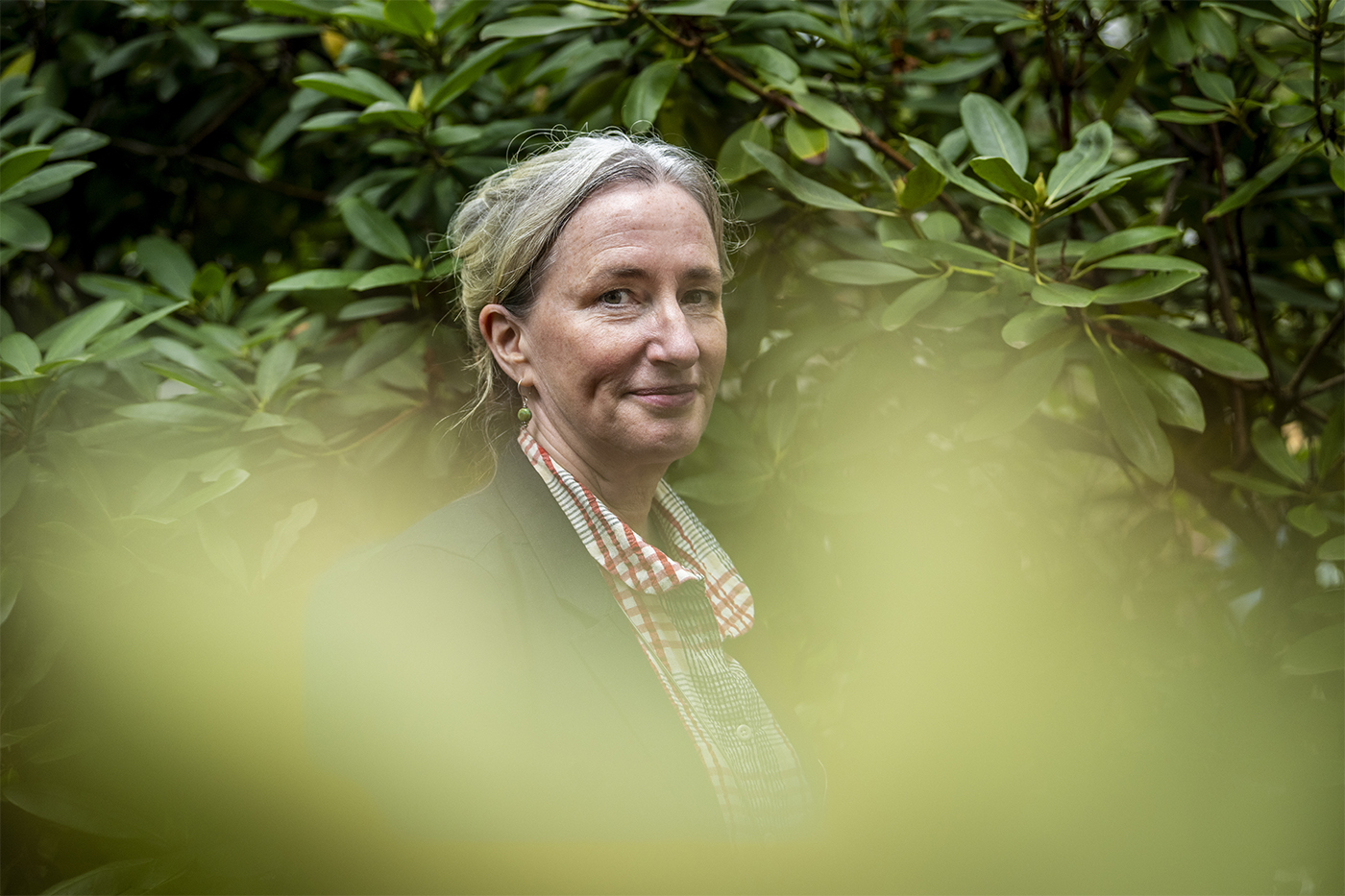
“This is not just a story about the past but also about how seaweed can be part of a sustainable future,” Coughlin says. She says the exhibit allows viewers to explore “art and culture through the lens of ecology.”
A dress made of seaweed
Exhibit A may be a small but eye-popping studio portrait from the 1880s of a woman wearing a dress made of seaweed.
“It may have been for a costume party,” says Coughlin, a teaching professor at Northeastern’s College of Arts, Media and Design, who co-curated the exhibit with Naomi Slipp, the New Bedford Whaling Museum’s chief curator.
The fascination with seaweed “seems very strange when you first encounter it. Then you realize it was a widespread interest,” Coughlin says.
People collected seaweed and used it in artwork and decorative designs, Coughlin says. In the Victorian period, women pressed delicate seaweeds in scrapbooks similar to the way they pressed flowers on paper.
Several of these scrapbooks, which allowed women who faced barriers to careers as scientists to become amateur marine botanists, are included in the exhibit along with 19th-century paintings and photographs, and illustrations from the popular press that explored seaweed harvesting as a theme in art in New England, France and the United Kingdom.
In New England, for instance, seaweed was harvested for animal feed, fertilizer and even home insulation in the form of dried eelgrass.
The monumental painting at the heart of the exhibit
At the heart of the exhibit is a monumental painting by Clement Nye Swift owned by the New Bedford Whaling Museum that depicts an ox-drawn cart piled high with heavy, wet kelp being pulled and pushed along a beach.
Swift was an American painter from Acushnet, Massachusetts, who was born in 1846.
Like other American artists of the time, he went to Paris to become a painter and was copying a well-known plowing scene by French artist Rosa Bonheur when the Franco Prussian War intervened and he left for the international artist colony in Pont Aven Brittany.
There on the northwest coast of France, Swift was inspired by seaweed harvests to turn the theme of an original painting into “a very different scene of rural labor,” Coughlin says.
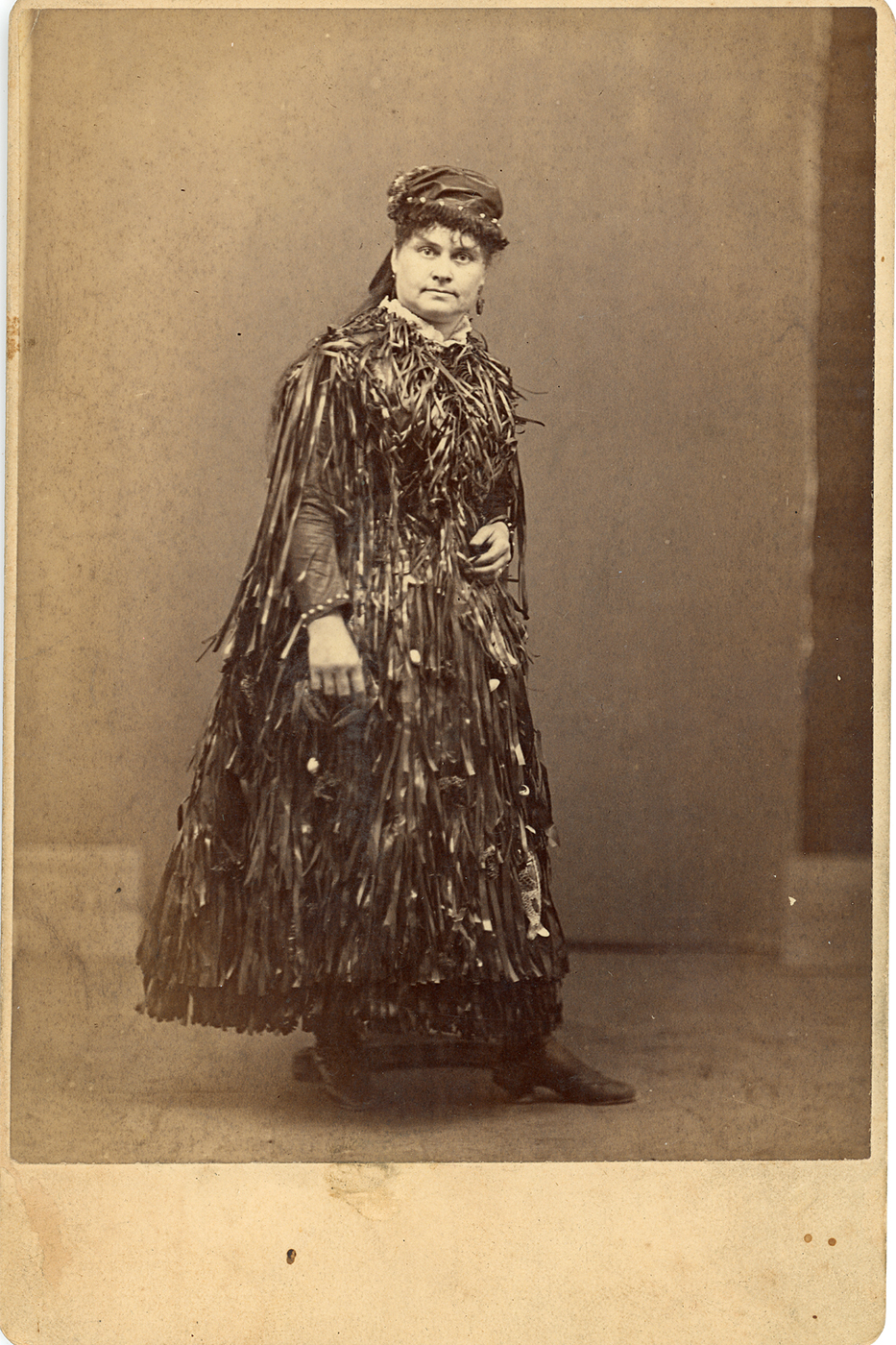
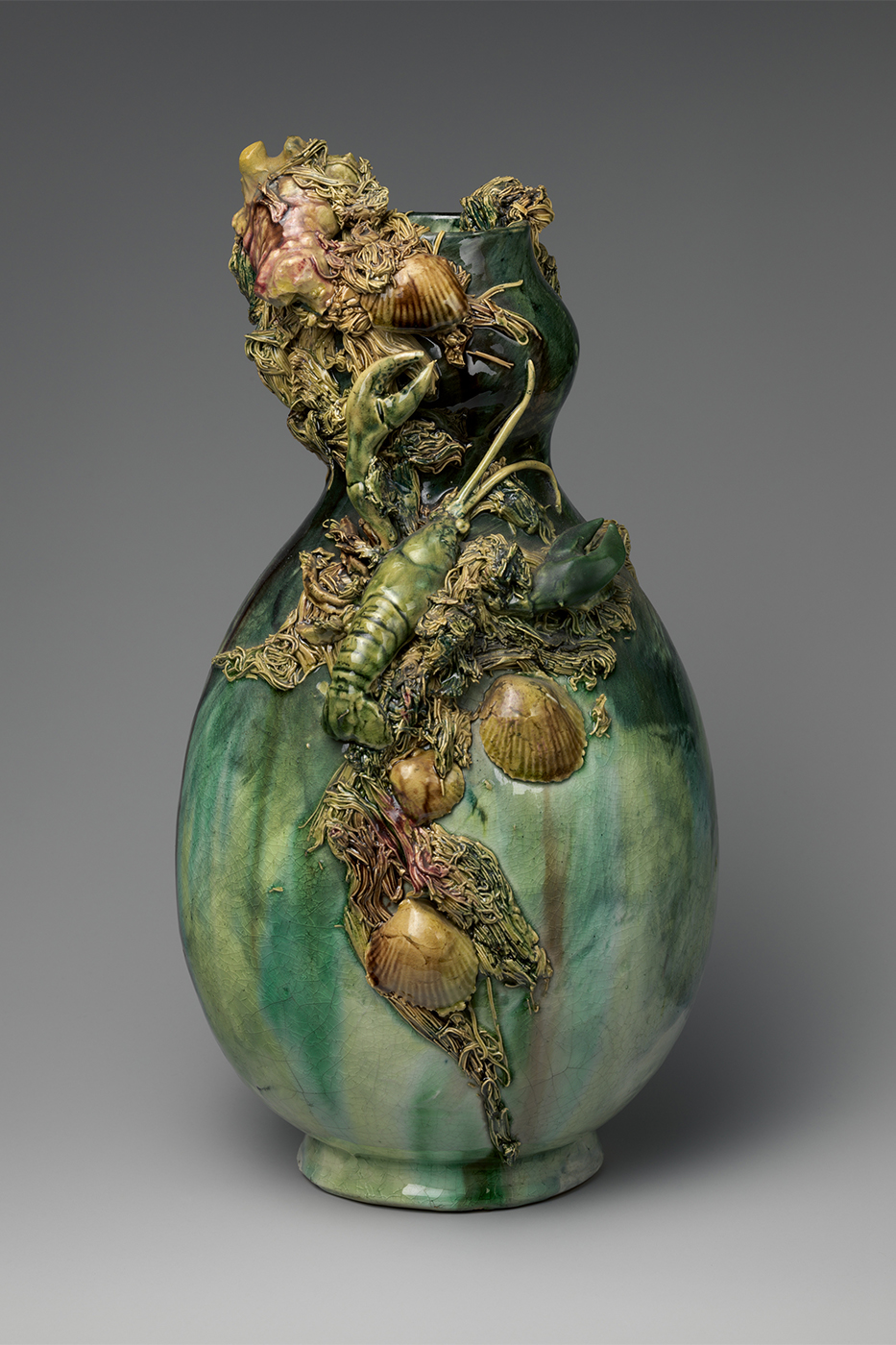

She says other artists would have enthusiastically responded to the theme of old-fashioned peasants from Brittany pushing the heavy, wooden-wheeled ox cart, which was inexplicably but artistically topped by a young woman wearing a traditional red kerchief.
“I’ve done a lot of research about seaweed harvesting in Brittany. It was an ecological commons regulated by each town. There were rules about who could cut live seaweed at low tide because it was such a valuable resource,” says Coughlin, whose background is in 19th-century art and the environmental humanities.
Breton peasants also mixed seaweed with cow manure and burned it as fuel in place of firewood and also burned kelp to extract iodine ash for glassmaking and other purposes, she says.
Tiffany, Limoges, William Morris
“Apart from the peasant culture of seaweed, it also became a really fascinating motif for the decorative arts. So it’s a material that’s both culturally high and low at the same time,” Coughlin says.
In addition to watercolors by John Singer Sargent and Andrew Wyeth, the exhibit includes a seaweed-inspired yacht trophy, sterling silver, stunning porcelain by Limoges, wallpaper from the William Morris collection and Tiffany enamel on copper plaque, which is on loan from the Metropolitan Museum of Art in New York.
Also on loan from the Met is another of the exhibit’s showstoppers: a four-foot, 145-pound French stoneware vase that seems to be overflowing with seaweed.
“It was a showpiece of Art Nouveau pottery at the 1900 Paris World’s Fair,” Coughlin says. “This is a real tour de force. It’s hard to fire something this big.”
The seaweed designs give a surprisingly contemporary look to some pieces from the 18th and 19th centuries, including a set of orange and black Staffordshire pottery and early blue and white photography, called cyanotypes, by Anna Atkins.
Why seaweed continues to inspire artists
More than 30 lenders contributed to the exhibit, which hosts a contemporary section with artwork including 84-by-28-inch panels on canvas by Lisa Tyson Ennis that incorporate the blues of cyanotypes, and oil panels of Irish moss by Krisanne Baker.
Also on display is a modern take on the seaweed album, created by contemporary artist Mark Dion, who is from New Bedford.
Beachcombers are very familiar with the timeless appeal of seaweed, Coughlin says.
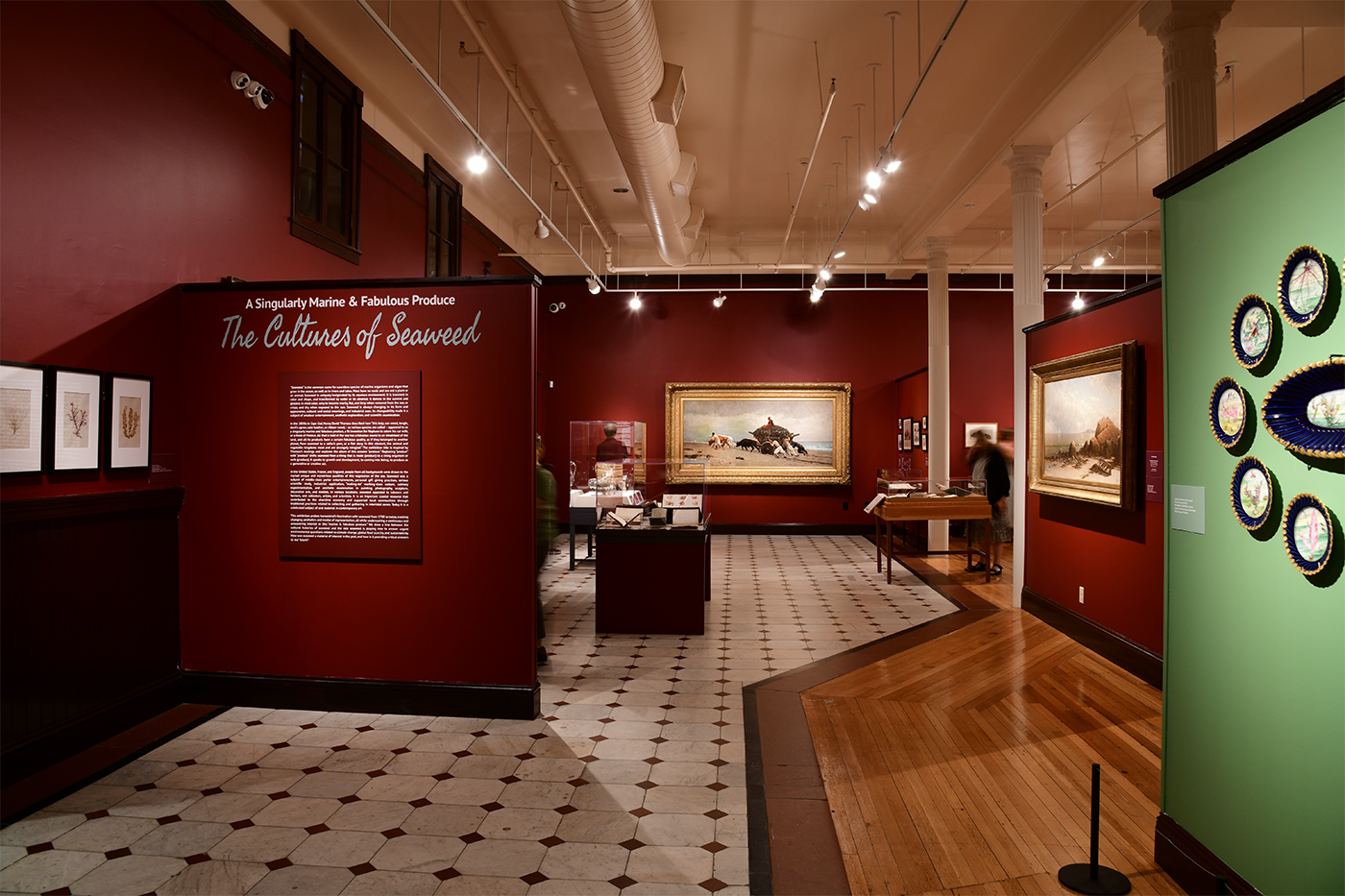
“When we walk on the beach, we like picking things up and looking at things. You start to really focus on something like a piece of seaweed and realize, this flattened dry thing was alive and animate in the water — it was a different thing,” she says.
“It kind of gives you access to the undersea, which is still so mysterious to us.”
“Seaweeds are so different from land plants. They don’t have roots, they don’t make seeds in the same way. Some of them cling to rock, some of them float free,” Coughlin says.
“Sometimes people find them to be slimy or disgusting, sometimes incredibly beautiful. They have such a color range. And their forms are just really gorgeous to contemplate,” Coughlin says.
Seaweed still is used today, such as kelp products in toothpaste, ice cream and supplements, she says.
As part of the exhibit, the museum held a panel featuring scientists who discussed the current and potential role of marine algae, especially kelp farming, “in thinking about climate change, ocean acidification and food security,” says Coughlin, who is developing a Northeastern course on landscape, ecology and the anthropocene in art and design.
“Art and design can narrate the story of climate change in a way that creates community and encourages activism,” Coughlin says.
On Oct. 5, she will participate in a roundtable discussion of the culture and aesthetics of seaweed along with Slipp, artist May Babcock and art historian Marina Wells from the New Bedford Whaling Museum.
It was Henry David Thoreau who called seaweed “singularly marine and fabulous.”
The New Bedford Whaling Museum proved to be a perfect location for the exhibit, Coughlin says.
“It’s a museum that resulted from several different small museums coming together. It’s like a historic society, a whaling museum and an art collection. It’s the perfect kind of place to do this interdisciplinary work.”
Cynthia McCormick Hibbert is a Northeastern Global News reporter. Email her at c.hibbert@northeastern.edu or contact her on Twitter @HibbertCynthia.






